Chicago Cubs can’t help but play ‘what if’ after Tuesday night’s loss
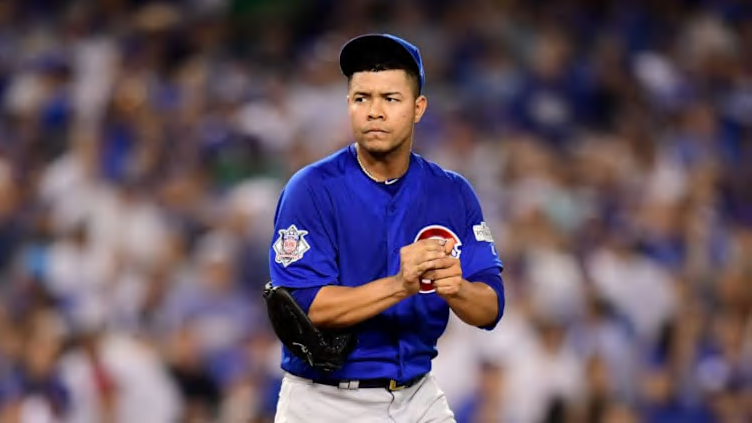
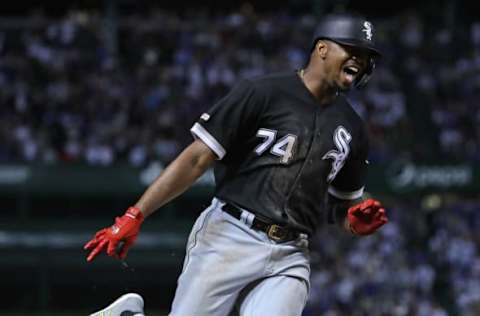
The mid-2017 blockbuster that brought Jose Quintana to the Chicago Cubs and sent the team’s top two prospects to the South Side took center stage Tuesday.
Looking back and evaluating the 2017 All-Star Break blockbuster between the crosstown rival Chicago Cubs and Chicago White Sox is no easy task. The fans and the media of course always want to be quick to crown a winner and pinpoint a loser but sometimes it isn’t always as clear-cut as we may like.
In this case, both teams were on completely different trajectories and looking to accomplish different things. The Cubs were coming off a World Series title in 2016 and their championship window was, for all intents and purposes, wide open. Meanwhile, the White Sox were in complete rebuild mode, selling off their most talented pieces in order to stockpile prospects to form the best farm system in all baseball.
Now, with these two teams being crosstown rivals, they almost never make any deals. In fact, prior to the Quintana trade, the clubs hadn’t made a deal since 2006. But they came up with a trade that, at the time, really benefited both teams.
The Cubs parted ways with their top prospect in Eloy Jimenez, Dylan Cease, Matt Rose and Bryant Flete in order to acquire Jose Quintana from the White Sox. The Sox got the highly-touted prospects they so highly coveted in Jimenez and Cease and in return the Cubs got a third dominant starting pitcher in Quintana to go along with Jon Lester and Kyle Hendricks in the rotation.

Chicago Cubs needed Jose Quintana in the 2017 rotation
Before the Cubs acquired Quintana from the White Sox they were a sinking ship. They entered the All-Star Break with a 43-45 record and were 5 1/2 games behind the Milwaukee Brewers for first place in the National League Central Division.
The starting rotation was the biggest concern for the Cubs in the first half. The Cubs had four formidable starters but they turned to the likes of Brett Anderson and Eddie Butler to make a combined 17 starts – hardly what you’d call a fearsome duo.
The Cubs knew they needed to upgrade the rotation and couldn’t wait until the Trade Deadline to do it with given their already sizable deficit in the division. They made the early move at the All-Star Break, acquiring Quintana and giving themselves a huge shot in the arm.
In the second half of the season, the Chicago Cubs were a completely different team. They went 49-25 post-Midsummer Classic, won the Central division by six games and went to their third consecutive NLCS.
Quintana was a huge part of that as the Cubs ultimately won 10 of his 14 starts. He pitched to the tune of a 3.74 ERA and posted a 4.67 strikeout-to-walk ratio which was better than he did in the first half with the White Sox.
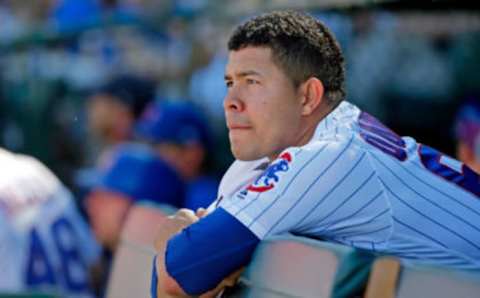
Chicago Cubs: Quintana wasn’t just a short-term move
While getting Quintana was certainly about helping the team in 2017, they were also looking ahead to the future. Quintana is on a team-friendly deal that keeps him under control until 2020 where he has a team option. The Cubs needed that desperately at the time with Jake Arrieta set to be a free agent and John Lackey ready to retire at the end of the season.
The move helped keep the Cubs’ starting rotation formidable and allowed them to make another splash in the offseason to put it together. Although the two moves didn’t necessarily work out as well as they would have liked, it allowed the Cubs to go sign Yu Darvish and Tyler Chatwood in the winter to round out their rotation heading into 2018.
Since then Quintana has continued to be consistent and durable as he has been throughout his entire career. Since his rookie season, he has made 32 starts or more every year. He’s continued that durability for the Cubs starting 46 games over the last year-and-a-half.
While he has been reliable he hasn’t necessarily taken that next step that many Cubs fans were hoping he would. When the club traded for Quintana, many believed he could be a top-three pitcher in the rotation but if you look at the rotation now, he is probably the Cubs’ fifth starter. That’s slightly disappointing, considering the Cubs had to give one of the top prospects in all of baseball to get him.
But in all fairness, if it wasn’t for the acquisition of Quintana the Cubs probably wouldn’t be where they are now. The Brewers could have gotten Quintana back in 2017 and the Cubs could have missed the playoffs entirely and gone into the offseason needing three starting pitchers.
So while he hasn’t pitched like an All-Star like we hoped he would he has still brought a ton of value to the Cubs. He has helped keep the Cubs Championship window open and helped the Cubs reach the playoffs over the course of the last three seasons.
Ultimately, Jimenez and even Cease weren’t ready or able to help the Cubs compete for a World Series at that time. The Cubs weren’t going to call either of them up in 2017 or 2018, so instead, they traded their value for someone they believed would get them over the hump.
I think we all just get caught up in comparing Quintana to the potential that Jimenez has continued to show on the South Side. I think that’s how it will always be unless the Cubs win a World Series with Quintana.
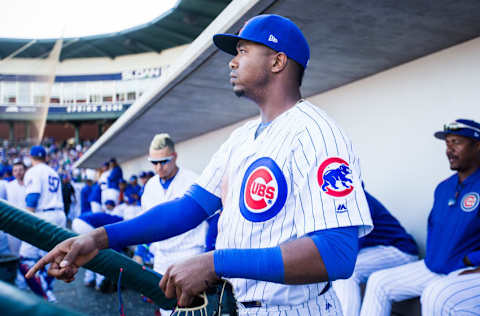
Chicago Cubs: What could they look like with Jimenez?
Eloy Jimenez finally made it his long-awaited, highly anticipated Wrigley Field debut on Tuesday night and it was one to remember. Unfortunately for Cubs fans, his debut came under different circumstances with him roaming the outfield as a member of the rival White Sox.
To make matters worse, the former top prospect made Cubs fans sick to their stomach with regret when he smacked a game-winning, two-run homer in the ninth inning. It felt almost scripted as Jimenez gave the Cubs a glimpse of exactly what they were going to miss out on by trading him.
The White Sox slugger has been swinging a red-hot bat lately, so it really wasn’t surprising that he delivered in the big moment. Over his last 16 games, Jimenez is slashing .351/.413/.737 at the plate and has driven in 16 runs. That home run was his sixth blast in his last nine games and.
That’s a huge step in the right direction for the young slugger who really struggled out of the gate early on in the year. He hit just .241 at the plate and got on base at just a .294 clip. The power hitter only managed to slug three home runs before he ended up on the injured list with a right ankle injury.
In total, Jimenez is slashing .254/.310/.497 with 12 home runs and 27 RBI. He’s on pace to hit 41 home runs and drive in 93 runs, which is pretty good for a rookie. He does have his flaws of course and needs to cut back on his swing-and-miss tendencies, but that’s the case with most players these days.
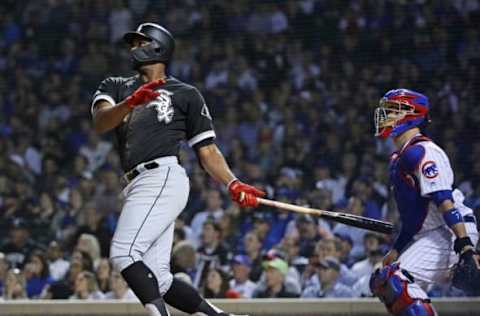
Chicago Cubs will be looking to the south for years to come
His bat is of course only going to get better over time and it surely would have fit in with this group of Cubs hitters. The North Siders’ offense is of course known to go into some serious slumps so I’m sure his bat would have been quite a luxury to have in instances like those.
The idea of Jimenez playing at Wrigley Field gets you thinking about what if the Cubs had never made the trade that sent him to the Sox. Well, I think the last few years would have gone a lot different but it’s still fun to imagine him in the lineup.
If they kept him he probably would have ended up in right field which would have ultimately shifted Jason Heyward to center. In order to improve their pitching, the Cubs probably would have traded Albert Almora or he would be their fourth outfielder.
Again, looking at this trade I think it made sense at the time and it still makes sense for both teams. The Cubs absolutely needed a starter like Quintana to round out the rotation and the White Sox probably got a full-fledged superstar in Jimenez.
Now, I’m not going to overreact to one game in June where Jimenez and the White Sox clearly got the better of the Cubs and say they absolutely won the trade. It’s too easy to get caught up in that kind of moment on both sides.
Chicago Cubs: Several could move to Starters Election for All-Star Game. dark. Next
At the end of the day, the winner of this trade should be determined by who capitalized on the deal and won more championships. That answer may not be revealed for quite some time as Jimenez’s career is just starting as is the White Sox’s window. So for the Cubs, it’s a little simpler, if they don’t win a title with Quintana, the trade was a failure. Simple as that.